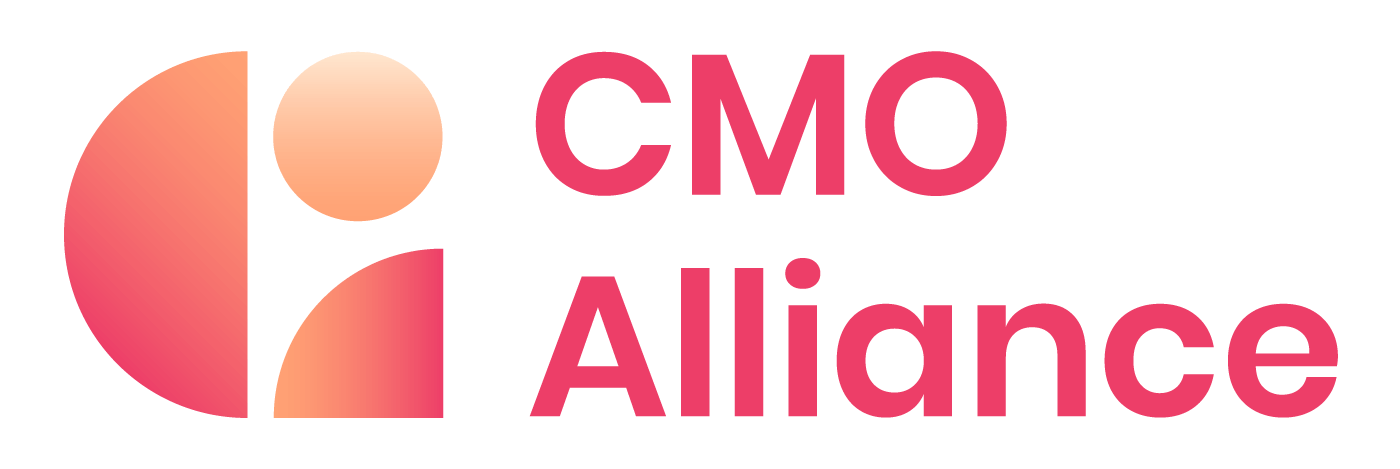This article is based on insights from Bob's appearance on the CMO Convo podcast.
Embracing the challenges and opportunities of fostering innovative cultures in marketing is essential for any business looking to excel. It's about cultivating an environment where innovation thrives across various team dynamics.
In this article, I’ll share insights into creating a culture that balances creativity with operational excellence, and how this approach leads to sustained business growth and team development.
Prefer to listen? Check out Bob's appearance on the CMO Convo podcast 👇
The importance of an innovative culture in marketing
Addressing whether creative cultures are still relevant in a data-driven, AI-augmented world, I believe the answer is a resounding yes. However, I prefer to shift the focus from 'creative' to 'innovative' culture.
This distinction is crucial because innovation in marketing isn't just about creative outputs. It's about creatively engaging with customers, introducing new touchpoints, and rethinking brand positioning.
The rapid changes in the marketing ecosystem, consumer behavior, media consumption, and the privacy landscape necessitate a culture of innovation. This type of culture is vital for teams to adapt and thrive even as the ground shifts beneath them. It's about evolving to meet customers where they are in a constantly changing environment.
In the current market, consumers are inundated with choices, thanks to the evolution of e-commerce. The competition is no longer confined to local stores but extends to hundreds of brands available online. In such a landscape, brands that fail to keep pace with these changes risk obsolescence.
An innovative culture, therefore, is not just a nice-to-have but a necessity for survival and success in the modern marketplace.
Debunking misconceptions about innovative and creative cultures
It's crucial to address some common misconceptions. Often, there's a tendency to equate innovative moments with flashy, big-brand campaigns or high-budget initiatives. While these can be effective in capturing consumer attention, they are frequently short-lived. True innovation often lies in less glamorous but more impactful changes that can fundamentally shift how consumers engage with a brand.
The real essence of innovation in marketing is not always about creating a buzz with big, splashy campaigns. Instead, it can be something as seemingly mundane as redesigning an email campaign's onboarding flow to better cater to different customer segments. These types of innovations might not be as eye-catching, but they can lead to significant and lasting improvements in customer engagement and brand loyalty.
Creating a balanced marketing team
Regarding team composition, it's a blend of having the right ingredients and creating the right environment. The team must comprise individuals passionate about the brand and customer, driven to achieve great results.
This mix should include a balance of analytical, technical, creative, and strategic skills. The exact composition might vary based on the company's specific needs, but the core elements remain constant.
Fostering an environment for innovation
To foster an innovative culture, it's important to create a non-hierarchical environment where ideas can freely flow, regardless of an individual's position. This not only leads to better solutions but also increases motivation and buy-in across all levels.
Another key aspect is emphasizing the importance of testing and learning. Everyone on the team should understand their role in operational excellence and the need for continuous improvement through experimentation and learning.
Lastly, ensuring everyone understands their core mission and the problems they're solving is crucial. Clear communication of specific goals, KPIs, and milestones empowers team members to make informed decisions and requires less intervention from senior management.
These principles are foundational in creating a culture that thrives on innovation, continuous improvement, and adaptability, whether the team is highly technical or more creatively inclined.
Embracing diversity in innovative cultures
As we delve into the dynamics of innovative cultures, a key aspect emerges: the need to embrace and manage diverse personalities and work styles. This diversity is not just about skill sets, but also about how individuals contribute and express their creativity and passion.
A thriving innovative culture isn't just about being non-hierarchical or open to ideas from all directions. It's about creating an environment that draws out the best from every team member, recognizing that not everyone thrives in the same settings. For instance, while some may excel in live brainstorming sessions, others might produce their best ideas when given time to reflect and respond in written form.
To foster this diversity, it's important to offer multiple forums for idea generation and sharing. This could mean alerting team members in advance about problems that need solutions, allowing them to prepare their thoughts for discussion, whether in writing or in a structured live session. It's about recognizing and valuing different thinking styles and providing the appropriate platforms for each.
An interesting challenge in driving innovation, especially in remote work settings, is how video conferences can sometimes stifle creativity. There's a subconscious desire to conclude these virtual meetings quickly, which can lead to hasty agreement and less willingness to build on others' ideas. This contrasts with in-person sessions, where there's often more opportunity to develop and expand on emerging thoughts.
Managing diverse marketing teams, such as highly technical teams versus brand creative teams, requires a nuanced approach. Recognizing and catering to the different natural inclinations and strengths of these teams is crucial.
A one-size-fits-all method won't be effective; instead, a tailored approach that respects and harnesses the unique attributes of each team member is key to fostering a truly innovative and productive environment.
Navigating diversity and nuance in marketing teams
The conversation shifts to understanding the nuances in managing diverse marketing teams, highlighting the importance of creating a conducive environment for different personality types and approaches to innovation.
Innovation is not just about having great ideas; it's also about the way these ideas are communicated and developed within a team. Recognizing that not everyone is comfortable or effective in the same settings is crucial.
For instance, some might excel in live meetings, while others need time to formulate their thoughts in advance or prefer to express them in written form. It's important to provide multiple avenues for team members to contribute their ideas, whether through advanced notice for meetings, encouraging written submissions, or directly asking for their input.
Technical vs. creative marketing teams
Diving deeper into the structure of marketing teams, I often categorize them into technical marketing teams and brand or creative marketing teams. Each has its unique characteristics and approaches to innovation.
Technical marketing teams
These teams focus on channels driven by advertising technology, algorithms, and mathematics. Their innovation lies in developing new technical capabilities, personalizing customer interactions, or refining bidding strategies for digital advertising.
The innovation process here is more objective, based on a deep understanding of current capabilities and the feasibility of developing new ones. The results of these innovations are often clear-cut: they either work or provide valuable learnings.
Brand or creative marketing teams
On the other hand, brand or creative marketing teams require a deep understanding of the brand and the customer. Their innovations are centered around how the brand is presented and the storytelling aspect.
The brainstorming process in these teams is more iterative and subjective, involving a wider range of stakeholders and often requiring more time for ideas to develop and gain buy-in. The outcome of these creative endeavors can be more subjective, influencing brand metrics that may take time to manifest fully.
Structuring brainstorming sessions
When structuring brainstorming sessions, it's essential to consider the nature of the team - technical or creative - and tailor the approach accordingly. While technical discussions might focus on capabilities and execution, creative brainstorming is often looser, more iterative, and subjective. Recognizing and accommodating these differences is key to fostering effective innovation across diverse marketing teams.
Balancing flexibility and specialization in marketing teams
A key element for both technical and creative teams is the need for permission and support to experiment and innovate. As a leader, it's crucial to not only give teams the freedom to try new things but also to assist in removing obstacles that might hinder their efforts. Celebrating successes and learning from failures equally is essential in building a culture that values innovation.
Recognizing and celebrating both minor and major innovations is vital. Whether a campaign or a technical test, acknowledging the effort and learning, irrespective of the outcome, encourages continuous innovation and idea generation.
Addressing the reality of budget constraints and team sizes, it's indeed possible to foster a creative culture in small teams. In such environments, team members often wear multiple hats, balancing both technical and creative roles. This cross-functionality not only leads to a more cohesive team but also enhances learning and engagement.
As organizations grow, specialization becomes more necessary due to the sheer volume of tasks and the complexity of projects. In larger teams, it's impractical for everyone to be involved in every aspect of marketing.
The role of a CMO or senior marketing leader in such scenarios is to ensure that there's a clear understanding and connection between different teams and projects. While specialization is required for efficiency, maintaining a level of cross-team awareness and collaboration is key to ensuring a cohesive and innovative culture.
Whether in a small team with blended roles or a large team with specialized functions, the underlying principle is to maintain a culture that encourages experimentation, learning, and collaboration. The balance between technical and creative approaches should be fluid, adapting to the team's size, the nature of the projects, and the organization's overall objectives.
Evolving leadership styles in growing marketing teams
At the outset of my time at Wayfair, with a team of 15, we operated in a mode where everyone was a 'jack of all trades.' This approach was feasible and effective in a small team setting.
However, as the team grew to over a thousand, the need for specialization became evident. Initially, team members wore multiple hats, including acting as mini data scientists or brand specialists. But as we scaled, it became crucial to develop specific sub-functions within the team, such as dedicated data science and brand specialization.
In smaller teams, a key responsibility of a CMO is to teach and guide team members on how to innovate across various objectives and tasks. This involves helping them understand how to think about brand objectives, technical aspects, and switching between these modes effectively. Leading by example, whether it’s getting involved in technical experiments or demonstrating flexibility in brand creativity, is essential in teaching the team these skills.
As a company grows, maintaining an ethos that encourages understanding and participation in both technical and creative aspects of marketing can be beneficial. It helps in developing marketers into well-rounded leaders who are adept in various aspects of the field.
From a metrics perspective, many aspects of creative and innovative cultures are testable and quantifiable. For instance, tracking the outcomes of various tests and innovations provides concrete data on the value added to the organization. This can be compared against what would have happened if traditional methods were solely employed.
Additionally, internal team engagement and happiness can be a good indicator of the success of these cultures. This can be measured through internal surveys, Net Promoter Scores (NPS), and other engagement metrics. Therefore, the impact of an innovative culture can be observed both in business outcomes and team engagement levels.

Balancing celebration, learning, and operational excellence
A crucial aspect of fostering an innovative culture is the consistent celebration of both minor and major innovations. This not only motivates the team but also aids in tracking and compiling these innovations over time.
The accumulated data from these tests and experiments build a rich repository of institutional knowledge. This knowledge enhances our intuition about what resonates with customers, from copy choices to landing page designs. By analyzing patterns in successful tests, such as the effectiveness of personalized messaging, we can make more informed decisions on future initiatives.
Innovation isn't always about grand gestures or radical changes. Often, it's the small, incremental improvements that collectively contribute to a robust and effective innovative culture. Simple actions, such as allowing extra time for brainstorming or casual coffee breaks to share ideas, can significantly enhance creativity and innovation. It's about continuously finding ways to improve and adapt, recognizing that no innovative culture is ever perfect.
An often-overlooked aspect of fostering an innovative culture is the importance of operational excellence. Running the day-to-day business efficiently provides a solid foundation for innovation. Teams that are deeply involved in the operational aspects of the business develop a sharper intuition for identifying areas for innovation and improvement.
A separate innovation team, detached from daily operations, may lack the nuanced understanding necessary to prioritize effectively and generate impactful ideas. Therefore, integrating innovation with operational responsibilities is key to creating a sustainable and effective culture of continuous improvement and creativity.
Reflecting on innovation and operational excellence
Innovation within an organization often benefits greatly from the insights of those who have been intimately involved in its operations. Someone new to the organization may bring fresh ideas, but they might lack the nuanced understanding that comes from hands-on experience. Those who have been part of the day-to-day workings tend to develop a deeper intuition about what might work best, making their contributions to innovation more grounded and effective.
The evolution of AI and marketing automation technologies presents a significant opportunity. As routine tasks become increasingly automated, creative thinkers within an organization are freed up to focus on higher-level improvements and innovations. This shift allows teams to explore new ways to enhance processes and other aspects of the business, further driving innovation.
A little about me
I'm Bob Sherwin, and I'm excited to share my insights on the intersection of culture and marketing creativity. My career journey has been a blend of consultancy, strategy, and hands-on operational roles, and after a fulfilling decade at Wayfair, I’ve ventured into advisory and board roles for early-stage and mid-market companies. This new chapter allows me to return to my roots as a consultant and counselor, guiding companies through transitions akin to those I experienced and navigated at Wayfair.
Need more advice on how to develop and maintain innovative cultures? The CMO Alliance Community Slack channel is a global network of marketing leaders ready to share their insights with you.




